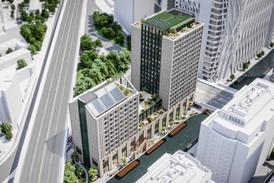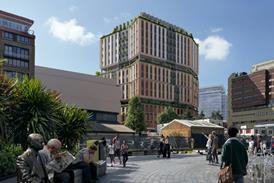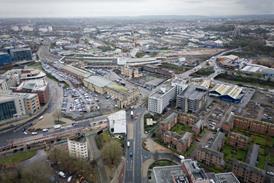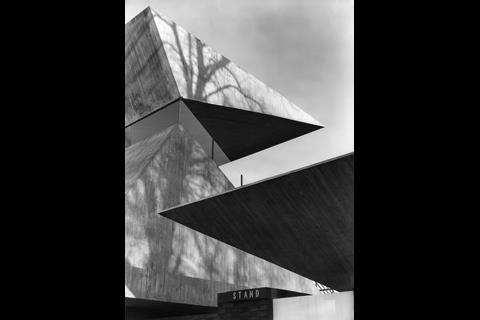Concurrent shows explore the architecture of global football stadia and a segregated hilltop enclave established during British colonial rule in Sierra Leone

Two exhibitions opening this autumn at Tate Liverpool and organised by RIBA North will examine contrasting aspects of architectural history, with one focusing on the design of football stadiums and the other on colonial-era planning in West Africa.
Opening first, on 4 September, Hill Station: Architecture and the Altitudes of Empire explores the development of a segregated residential enclave constructed in the early 20th century on high ground above Freetown, Sierra Leone. The exhibition traces the origins of the site to an 1899 expedition by the Liverpool School of Tropical Medicine, which recommended housing Europeans away from the city centre to reduce the risk of malaria transmission.
The enclave, known as Hill Station, was built on the advice of Nobel Prize-winning researcher Ronald Ross and comprised prefabricated wooden bungalows arranged on a plateau overlooking Freetown. The exhibition examines how architecture was used as a tool of health segregation and colonial governance, and investigates the links between the British Empire, tropical medicine, and urban development.
Curated by Ed Lawrenson (UCL) and Killian O’Dochartaigh (University of Edinburgh), the installation combines archival research with newly fabricated scale models and a film shot in Freetown, Liverpool and London.
O’Dochartaigh said: “The ‘Hill Station’ houses, built in the 1900s and still standing today, are situated on a plateau overlooking the Sierra Leone capital. But we had little idea when we began our research that this remote elevated enclave owed its existence to decisions taken in Liverpool, by colonial-era scientists, administrators, and businessmen.”
The second exhibition, Home Ground: The Architecture of Football, opens on 15 October and traces the development of stadium design from the 1890s to the present day. Timed to coincide with the forthcoming opening of Everton FC’s Hill Dickinson Stadium at Bramley-Moore Dock, the show presents material on more than 50 football grounds around the world.
The exhibition includes models, drawings and photographs of historic and contemporary stadia. It begins with the early 20th-century work of Archibald Leitch, who designed grounds for Everton, Rangers and Chelsea, and continues through to recent designs by practices including Populous, Herzog & de Meuron, BDP and gmp Architekten.
Featured projects include Tottenham Hotspur Stadium in London, the Allianz Arena in Munich, and the Estadio Santiago Bernabéu in Madrid. Archival material and contextual photography explore how stadiums function both as sports venues and cultural landmarks.
RIBA President Muyiwa Oki said: “Football has a unique ability to stir emotions, cross borders and captivate the world. At their best, stadiums are as iconic as the players themselves, etched into the hearts of fans long after the final whistle.”
Hill Station: Architecture and the Altitudes of Empire runs from 4 September to 16 November 2025.
Home Ground: The Architecture of Football runs from 15 October 2025 to 6 January 2026. Both exhitions are at Tate Liverpool.
























No comments yet